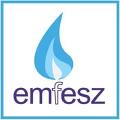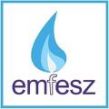
Gazprom’s Murky Games in Hungary
Publication: Eurasia Daily Monitor Volume: 6 Issue: 86
By:

Gazprom may be preparing to take over a large part of the Hungarian domestic gas distribution network. A new, highly opaque deal is in the works as a result of which Hungary’s energy security could be threatened. On April 28 Emfesz KFT, a major Hungarian gas distribution company owned by Ukrainian businessman Dmytro Firtash, announced that it will stop importing gas from RosUkrEnergo (RUE), a company based in Zug, Switzerland and will instead buy gas from an unknown company, RosGas AG, also located in Zug.
An Emfesz press release claimed that: "RosGas is a company in Gazprom’s network of business interests." Furthermore, the press release stated that: "The new gas acquisition system of Emfesz is independent of Ukraine. Gazprom, whose interest is to keep Emfesz consumers supplied with gas, has played a role in shaping the system. The supply of all Emfesz’s gas consumers is continuously guaranteed and the fact that RosGas will be the gas provider of Emfesz involves no perceptible change for the latter’s customers" (www.emfesz.hu, April 28).
Emfesz, the second largest Hungarian gas distributor which imports 3 billion cubic meters annually, was forced to turn to another middleman for its gas supplies after RUE was removed from the Ukrainian – Central Asian gas trade in January 2009 (www.emfesz.hu, January 9). However, the owner of Emfesz Dmytro Firtash, has several commercial interests. He is also the 45 percent owner of RUE – 50 percent of which is owned by Gazprom and 5 percent by Firtash’s business partner, Ivan Fursyn.
Gazprom’s spokesman Sergey Kuprianov, sharply contradicted the allegation that the company was linked to Rosgas: "It is well known that the only export channel for Russian gas is the company Gazprom Export. The company RosGas which was named today in the Hungarian media has no relation to Gazprom and is not part of the Gazprom Group" (Interfax Ukraine, 29 April).
According to company records located by Jamestown, RosGas AG was first registered in Zurich, under the name IKRON AG on December 10, 2008 and changed its name eight days later to RosGas AG while relocating to Zug -only a few weeks before the Ukrainian-Russian gas conflict began in January 2009. The two principle shareholders of RosGas are Andras Laki, and Tamas Grazda, a Hungarian national who also happens to be the acquisitions and mergers director for Emfesz and a member of the management board of Emfesz, Poland (www.moneyhouse.ch, April 3).
The immediate suspicion is that RosGas AG is yet another in a long line of shadowy intermediary companies created by Firtash and Gazprom. However, in the case of RosGas this may mask a possible attempt by Gazprom to cut gas supplies to Firtash’s Emfesz, as a precursor to a company takeover -vastly increasing its share of the Hungarian domestic gas distribution network.
Hungary has been a key target for the Russian state-owned Gazprom since the collapse of communism within Central Europe. Viewed as a potential major European gas hub, Hungary first became a target of the Kremlin in 2002 when the mysterious gas trading company, Eural Trans Gas (ETG) was registered in Budapest. That year ETG took over the contract from a Russian company, Itera, acting as the intermediary for supplying gas from Turkmenistan to Ukraine. ETG was a totally opaque structure which was later exposed as belonging to Ukrainian gas trader Dmytro Firtash and his partner, Ivan Fursyn, a banker from Odessa with close ties to the administration of then-Ukrainian president Leonid Kuchma.
ETG was paid for its services with 13 billion cubic meters of gas by the Ukrainian side which it then sold on the European market for a considerable profit. Soon after it began trading, the company’s owners were suspected of having connections to the Russian mafia. This was denied by the then-unknown owners of ETG, who instituted a number of libel suits against anyone alleging the company had mafia links. The Kremlin became nervous and closed down ETG in July 2004, replacing it with a new intermediary company, RosUkrEnergo (RUE).
The 50 percent owners of RUE were the same individuals that had established ETG, Dmytro Firtash and Ivan Fursin, while the remainder of RUE was owned by Gazprombank -which at the time a fully owned subsidiary of Gazprom. The Kremlin, for undisclosed reasons, claimed that it did not know the identity of Gazprombank’s Ukrainian partners in RUE.
According to the company website, one year before the dissolution of ETG, Firtash created a new Hungarian company: "Emfesz, the First Hungarian Natural Gas and Energy Trading and Service Provider Ltd., was founded in 2003 to develop a major gas and energy business in Hungary following the liberalization of the country’s energy market with the passing of the Hungarian Gas Act in that year." Firtash presumably had the go-ahead to do this from Gazprom and a guarantee that he would be able to buy gas for Emfesz from RUE where he controlled 50 percent of the company. Firtash’s website stated: "The company (Emfesz) has a long-term, 10 year contract with RosUkrEnergo, a Swiss gas distribution company, for the supply of gas from Central Asia to Hungary."
As the Firtash-Gazprom relationship began souring in 2008, Gazprom made a number of offers to buy a substantial share of Emfesz, however Firtash refused to sell. In April 2009 the Russian audit chamber announced that Firtash owed Gazprom $514 million, exerting more pressure on him to turn over his Hungarian operation to Moscow (www.ukranews.com, April 21).
If RosGas begins supplying Emfesz with the large quantities of gas it is contracted to sell in Hungary, it will raise questions over the source of that gas. Is it possible that RosGas is another Gazprom scheme to possibly siphon off funds for the Kremlin and reward Firtash for his long-standing loyalty to the Kremlin.




